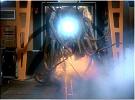Wallymanowar
Posts: 651
Joined: 8/1/2000
From: Vernon, B.C., Canada
Status: offline

|
quote:
ORIGINAL: Mogami
Hi, Paul Vebber (waiting for him to post here) worked for the USN minewarfare.
Its the old problem. Before DD,PC could detect mines we had the "Hey you don't need a minesweeper to detect mines, detecting them is half the work. Now we have the DD are clearing mines at 30 knts. I think not. I think the TF detects the mines and slows down and DD/PC do not clear a minefield like MSW.
I was on a USN FFG. We had no minesweeping equipment at all. In GW-I my ship (USS Halyburton FFG-40) detected and avoided (and since we were the "low end" of the the "high low mix" we led the TF (The CV USS America CV USS JFK TF) No ship in this TF ever hit a mine. The TF moved normally at 22 knts or better.
The only detection gear employed was the Mark-I eyeball. In daylight we could see submerged mines quite a long way off. If depends alot on seastate. At night you need to really pay attention.
Actually Mog, any ship which has a Sonar is capable of finding Mines. It takes a highly trained sonarman to distinguish but it was possible in those days and is easier today because of the advances in Sonar (side-scan and Bottom scan). Wikipedia gives a good description of the various types of mines and the countermeasures.
http://en.wikipedia.org/wiki/Naval_mine
quote:
Mine sweeping
A sweep is either a contact sweep, a simple metal wire dragged through the water by one or two ships to cut the mooring wire of floating mines, or a distance sweep that tries to mimic a ship to get the mines to detonate. The sweeps are dragged by minesweepers, either military ships or converted trawlers. Each run covers between one and two hundred meters, and the ships have to move slowly in a straight line, which makes them very vulnerable to enemy fire. This was most famously exploited by the Turkish army in the Battle of Gallipoli in 1915, when mobile howitzer batteries prevented the British and French from clearing a way through the minefields.
If a contact sweep hits a mine, the wire of the sweep (which is made of high quality steel) rubs against the wire mooring the mine until it is cut. Sometimes "cutters", explosive devices to cut the mine's wire, are used to lessen the strain on the sweeping wire. Any mine cut free is recorded and either collected for research or simply shot with the deck cannon.
Minesweepers can protect themselves by using an oropesa or paravane instead of a second minesweeper. These are torpedo-shaped towed bodies, similar in shape to a Harvey Torpedo, that are streamed from the sweeping vessel thus keeping the sweep at a determined depth and position. Some large warships were routinely equipped with paravane sweeps near the bows in case they inadvertently sailed into minefields — the mine would be deflected towards the paravane by the wire instead of towards the ship by its wake. More recently, heavy-lift helicopters have been employed to drag minesweeping sleds, as in the 1991 Persian Gulf War.
quote:
Mine hunting
Mine hunting is very different from sweeping, even if some minehunters can do both tasks. When mine hunting, the mines are located using sonar, then inspected and destroyed either by divers or ROVs (remote controlled unmanned mini submarines). It is slow, but also the most secure way to remove mines. Mine hunting started during the Second World War, but it was only after the war that it became a truly effective method.
_____________________________
I never blame myself when I'm not hitting. I just blame the bat and if it keeps up, I change bats. After all, if I know it isn't my fault that I'm not hitting, how can I get mad at myself?
Yogi Berra
|
 Printable Version
Printable Version
 What is the justification for this? I read every thing I can about the Pacific Theatre. I don’t recall reading anything about this (I may have and it did not sink in). I know the US used IJN DDs, after the war, to clear mines….the old fashion way by hitting them.
What is the justification for this? I read every thing I can about the Pacific Theatre. I don’t recall reading anything about this (I may have and it did not sink in). I know the US used IJN DDs, after the war, to clear mines….the old fashion way by hitting them.




















 New Messages
New Messages No New Messages
No New Messages Hot Topic w/ New Messages
Hot Topic w/ New Messages Hot Topic w/o New Messages
Hot Topic w/o New Messages Locked w/ New Messages
Locked w/ New Messages Locked w/o New Messages
Locked w/o New Messages Post New Thread
Post New Thread